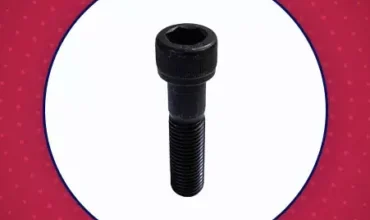Retaining wall caps are important but sometimes disregarded components of landscape architecture that preserve and beautify outdoor buildings. These thoughtful improvements serve far more than just aesthetic purposes; they are essential to the durability, structural stability, and general value of the home. Knowing the main factors that influence retaining wall cap selection is crucial as more and more property owners realize how important it is to complete walls properly. The choice to use caps should be carefully considered while building new retaining walls or renovating old ones. This article explores some strong arguments for retaining wall caps, looking at the functional and decorative advantages that affect this significant landscaping decision.
1. Enhanced Protection Against Water Damage
One of the biggest risks to retaining walls is water damage, which over time may jeopardize their structural soundness. A vital protective barrier, retaining wall caps divert water away from the wall’s surface and stop it from leaking into the building. The cap’s thoughtful design and small overhang guarantee that water drops away from the wall instead of pouring straight down its face when rainwater or snowmelt pours down the wall. In areas with high rainfall or sharp temperature swings, where water can freeze and expand inside the wall, leading to fractures and damage, this protection is especially beneficial. Homeowners may greatly increase the longevity and structural integrity of their retaining walls by installing an appropriate capping system, which will eventually save them a substantial amount of money on repairs and replacements that might otherwise be required due to water-related damage.
2. Aesthetic Appeal and Property Value Enhancement
An otherwise functional structure can be transformed into an architectural element that greatly improves a property’s aesthetic appeal with retaining wall capping. Similar to crown molding in interior spaces, these caps serve as the last touch that may improve the overall look of your outdoor area. Well-selected caps may give your landscape a unified design and a clean, polished appearance that goes well with the architectural style of your house. Caps come in a variety of materials, colors, and textures, so they may be chosen to either mix in perfectly with the hardscape’s existing pieces or to create a startling contrast. Because prospective buyers enjoy both the practical features and the elegant appearance that correctly topped retaining walls offer, this attention to detail in landscape design frequently results in a higher property value. Investing in wall caps usually pays off in the form of improved curb appeal and overall property beauty.
3. Structural Reinforcement and Stability
Beyond aesthetics, adding tops to retaining walls has an essential structural function. By serving as weight distributors, these elements efficiently distribute the pressure throughout the wall structure and stop individual blocks or stones from moving or shifting. For taller retaining walls or those bearing heavy soil loads, this force distribution is especially crucial. In order to create a cohesive structure that better withstands the natural forces trying to push the wall forward or cause it to tilt, the caps additionally join the top course of blocks or stones. The wall’s vertical alignment is preserved because of this extra stability, which also stops the wall from gradually deteriorating when individual components start to move. In regions with unstable soil conditions or during extreme weather events, the structural advantages of appropriate capping are particularly noticeable.
4. Prevention of Soil Erosion
Another important advantage of retaining wall tops is their ability to reduce soil erosion. Without adequate capping, a retaining wall’s top is susceptible to soil erosion from intense rain or wind, which might jeopardize the wall’s structural soundness as well as its aesthetic appeal. By forming a barrier, the cap helps keep the dirt behind the wall contained and stops it from overflowing or shifting due to natural factors. For walls that support garden beds or manicured areas where soil loss might impact plant health and overall visual appeal, this containment is especially important. Furthermore, by diverting water away from the soil directly behind the wall, the cap’s overhang helps lower the danger of erosion at the crucial soil-wall interface, where stability is most crucial.
5. Extended Lifespan of the Wall Structure
By offering vital protection against a range of environmental variables, installing caps on retaining walls greatly increases their operational lifespan. By serving as a barrier, the cap keeps the wall’s main construction safe from the elements, such as strong sunshine, cold temperatures, and torrential rain. Whether the wall is made of natural stone, concrete blocks, or another material, this protection keeps it from aging and deteriorating too quickly. Since water-related damage is one of the main reasons why retaining walls fail, the cap’s function in stopping water penetration is very crucial to increasing the wall’s lifespan. Property owners may practically double or triple the anticipated service life of their retaining walls by investing in high-quality wall caps, which makes the initial outlay for capping an economical long-term maintenance option.
6. Enhanced Safety Features
Retaining wall tops are an important component of any wall structure due to safety concerns, especially in public or residential locations. Wall caps’ smooth, polished surface removes any sharp edges and uneven areas that can injure kids playing nearby or anybody else who might come into touch with the wall. Furthermore, a lot of cap designs include rounded corners or small slopes to deter people from sitting or strolling on top of the wall, which can be risky, particularly for higher buildings. Because the caps provide a distinct, clean border at the top of the wall, they also improve visibility in low light. People may more easily and securely maneuver around the retaining wall thanks to the increased visibility, especially in dimly lit regions or in the nighttime.
Conclusion
A careful investment in the practical and decorative elements of property upkeep is represented by the choice to install retaining wall tops. These stone wall caps have several important functions, such as strengthening safety, lowering maintenance needs, and safeguarding the wall structure and prolonging its lifespan. Regardless of the project’s size or location, wall caps are a crucial consideration for anybody establishing or maintaining retaining walls due to their many functional advantages and adaptable design. Property owners may ensure both immediate advantages and long-term value for their outdoor areas by making well-informed decisions regarding their retaining wall investments by being aware of these eight key factors.





